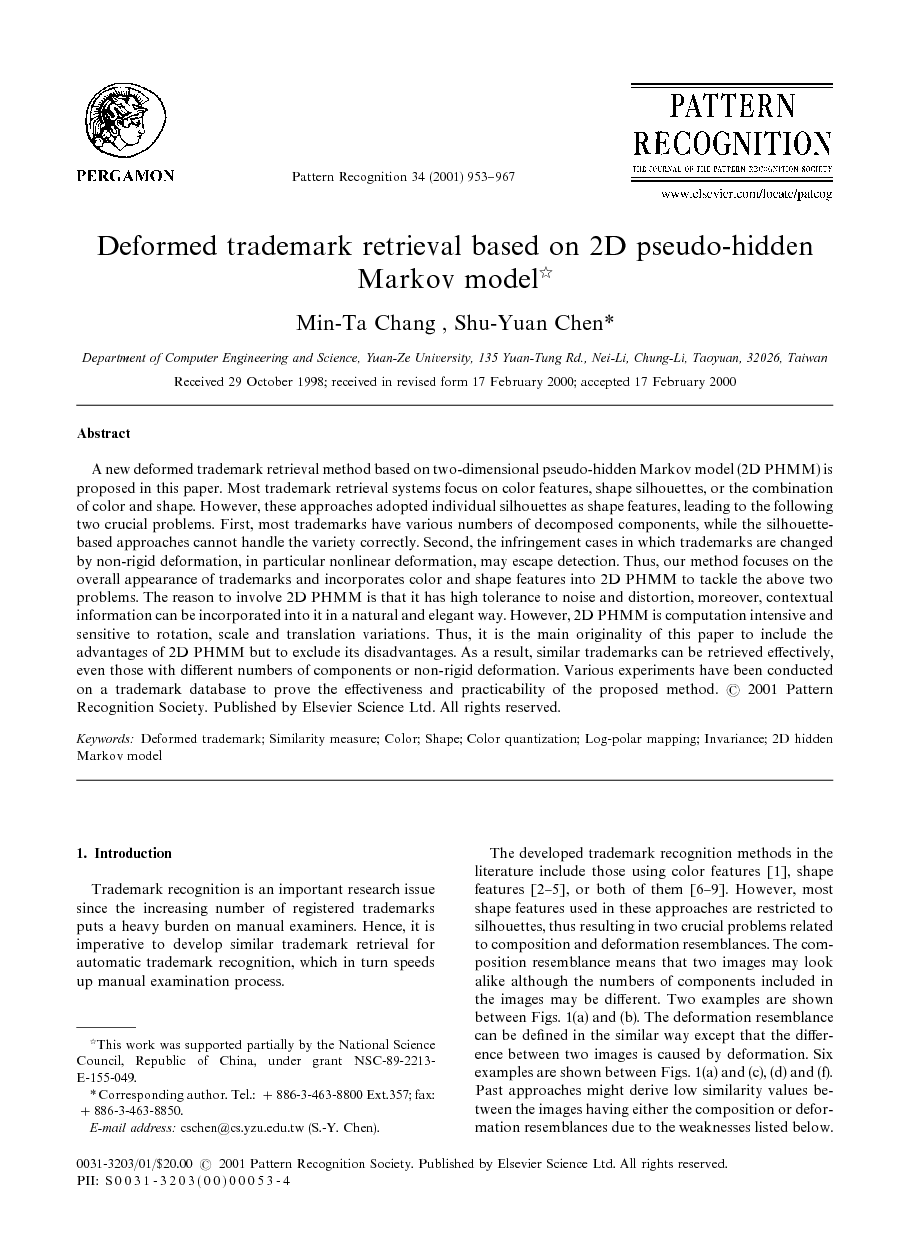ترجمه فارسی عنوان مقاله
بازیابی تغییر شکل علامت تجاری در مدل دو بعدی شبه مخفی مارکوف
عنوان انگلیسی
Deformed trademark retrieval based on 2D pseudo-hidden Markov model
| کد مقاله | سال انتشار | تعداد صفحات مقاله انگلیسی |
|---|---|---|
| 23022 | 2001 | 15 صفحه PDF |
منبع

Publisher : Elsevier - Science Direct (الزویر - ساینس دایرکت)
Journal : Pattern Recognition, Volume 34, Issue 5, May 2001, Pages 953–967
ترجمه کلمات کلیدی
2 - تغییر شکل علامت تجاری - اندازه گیری تشابه - رنگ - شکل - تدریج رنگ - نقشه برداری ورود قطبی - تغییرناپذیری - مدل مخفی مارکوف دو بعدی
کلمات کلیدی انگلیسی
Deformed trademark,Similarity measure,Color,Shape,Color quantization,Log-polar mapping,Invariance, 2D hidden Markov model,

